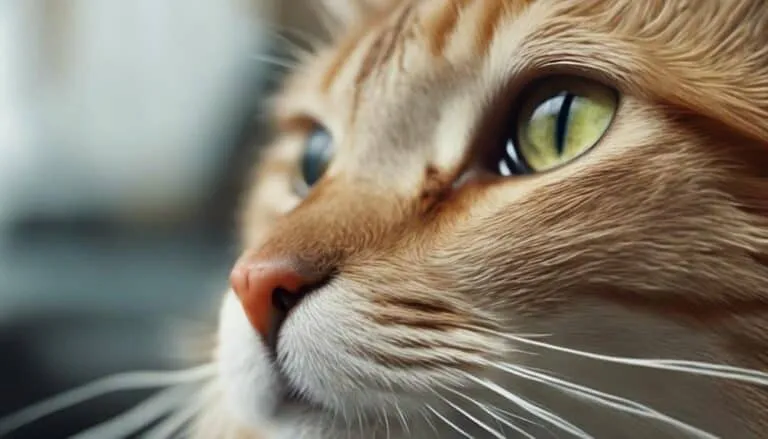The Best Fluffy Pancakes recipe you will fall in love with. Full of tips and tricks to help you make the best pancakes.
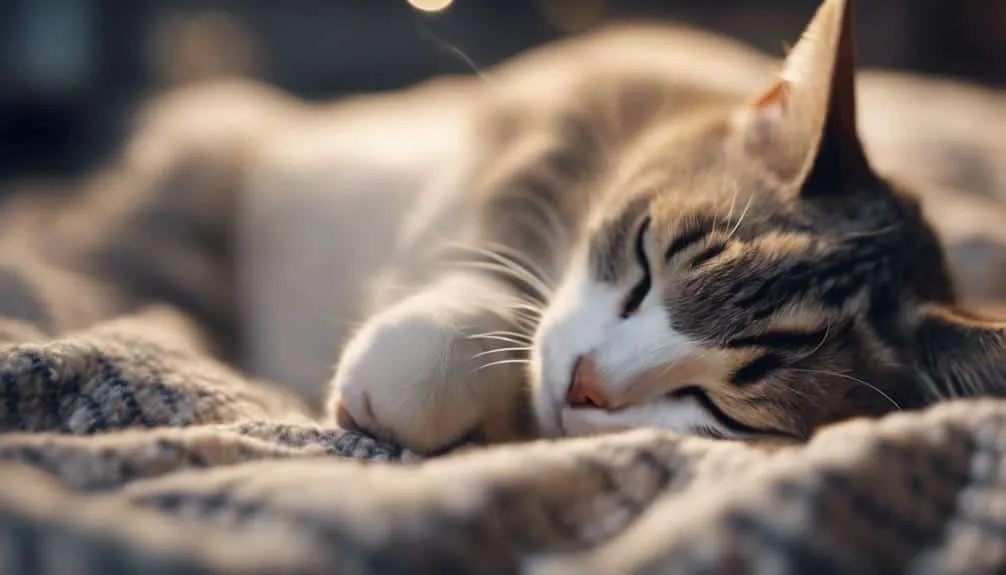
Ever wondered why cats purr? Well, that soothing sound actually carries hidden messages and emotions waiting to be uncovered. When a cat purrs, it’s not just a cute noise – it’s a mix of brain activity, vocal vibrations, and muscle movements that can benefit their overall well-being.
Purring serves as a natural healing mechanism for cats, helping them relax, reduce stress, and even aid in their recovery. By understanding why cats purr, we can appreciate the comfort and support they provide us with. It’s like a secret language that helps us connect with our feline friends on a deeper level.
If you pay attention to the different purring sounds and behaviors, you can get insights into your cat’s emotional state and what they might need from you. It’s a unique form of communication that strengthens the bond between cats and their human companions. Cat purring may be a mystery, but it’s definitely a powerful way for our pets to express themselves and connect with us.
Key Takeaways
Cat purring is like a secret code that cats use to express their emotions and needs. You see, different purring sounds and behaviors can give us clues about how a cat is feeling.
Did you know that silent purring is actually a big deal for cats? It’s how they can communicate their emotions and needs effectively without making a sound. So, when a cat is purring quietly, it’s like they’re talking to us in a special way.
When we understand a cat’s purring, we can really connect with them on a deeper emotional level. It’s like we’re speaking their language and showing them that we care about how they’re feeling.
By paying attention to the subtle cues in a cat’s purring, we can improve how we care for them and respond to their communication. It’s all about tuning in to their signals and showing them that we’re listening and ready to help.
The Science Behind Cat Purring
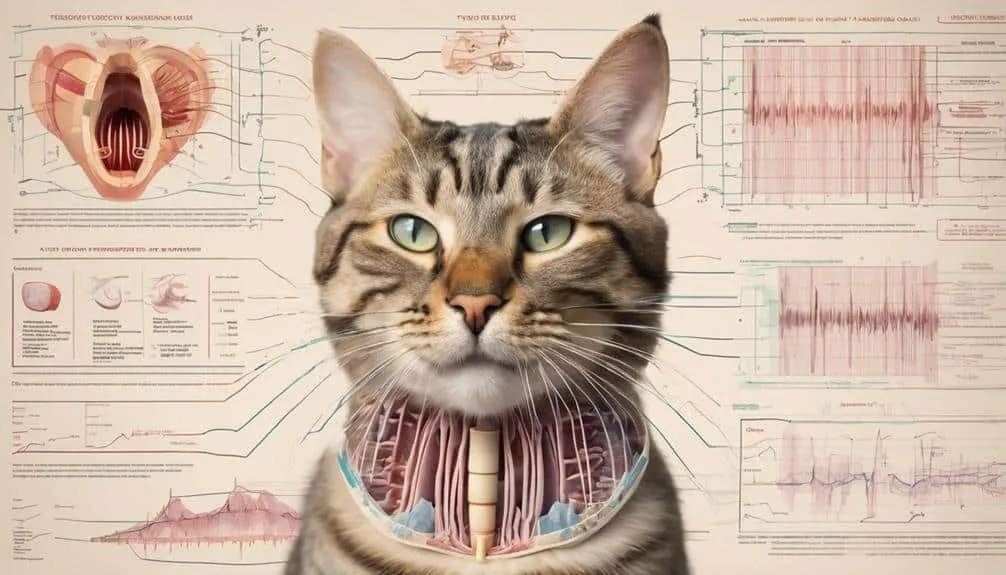
Cats purr through a combination of brain activity, vocal cord vibrations, and muscle movements. It’s a soothing sound that helps cats communicate their feelings and has healing effects.
When a cat purrs, it can lower stress, promote relaxation, and even aid in recovery. Understanding how purring works can help us appreciate the comfort and support it offers to cats in different situations.
This knowledge allows cat owners to better care for their furry friends by recognizing the importance of purring for their emotional and physical well-being.
Emotional Connections Through Purring
When you’re feeling close to your cat, their purring is like a warm hug, letting you know they’re feeling safe and cared for. This purring therapy can strengthen the bond between you and your feline friend, making you both feel more secure and connected. The way a cat purrs can show a range of emotions, from happiness and relaxation to worry or unease. By paying attention to these purring cues, you can better understand how your cat is feeling and respond in a way that supports them.
Listening to your cat’s purring can help you provide the comfort and reassurance they need in that moment. This mutual exchange of soothing sounds can deepen the emotional connection between you and your cat, building a stronger sense of trust and companionship. By tuning into your cat’s purring, you’re showing them that you care and are there for them, strengthening your bond in a special way.
Hidden Messages in Cat Purring
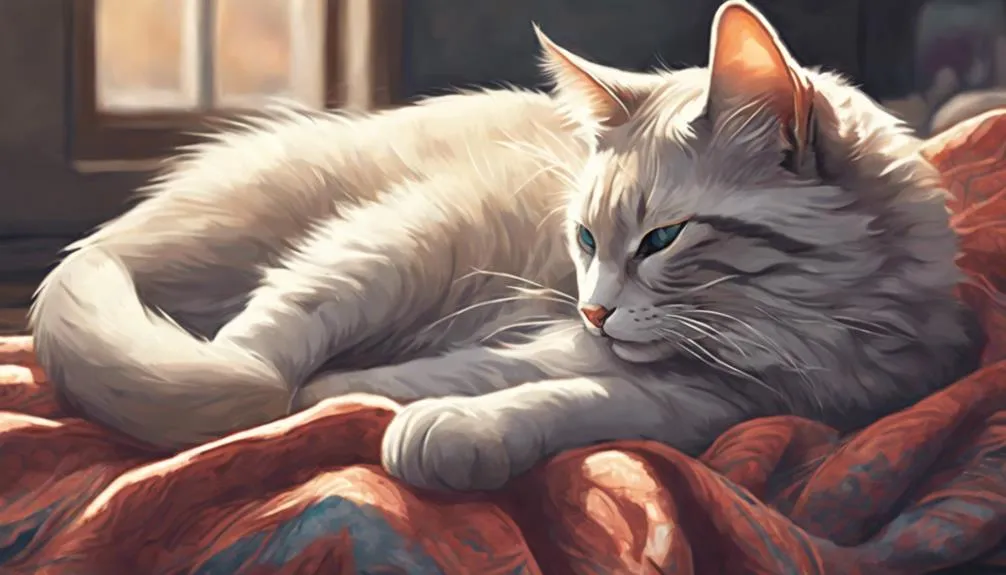
When a cat purrs, it’s like they’re speaking a secret language full of emotions and needs. The way they purr can tell us a lot about what they’re feeling or what they want. By listening to the different purring sounds and watching their behavior, we can understand what they’re trying to tell us. How often they purr, how loud it is, and how long it lasts can give us clues about their mood and what they need at that moment.
Cats use purring to show us they’re happy, comfortable, or sometimes even upset, depending on the situation. It’s their way of communicating with us, letting us know how they’re feeling without saying a word. By paying attention to these subtle signals, we can better care for our feline friends and respond to their needs effectively. Understanding their purring helps us connect with them on a deeper level, strengthening our bond with these mysterious creatures.
Decoding the Mystery of Purring
Do you ever wonder what your cat is trying to tell you when they purr? Cats have different purring patterns, and some may even purr silently, which can be hard for us humans to notice. To understand these patterns, you need to pay close attention and really connect with your furry friend. Some cats might only purr in certain situations or around specific people, so it’s important to pick up on these subtle cues.
Even though silent purring isn’t easily heard, it’s a significant way for cats to communicate. It can express a range of emotions and needs that your cat may have. By decoding these silent purrs and recognizing the subtle variations in their purring, you can build a stronger bond with your cat and respond better to what they’re trying to tell you.
Understanding Your Cat’s Purring
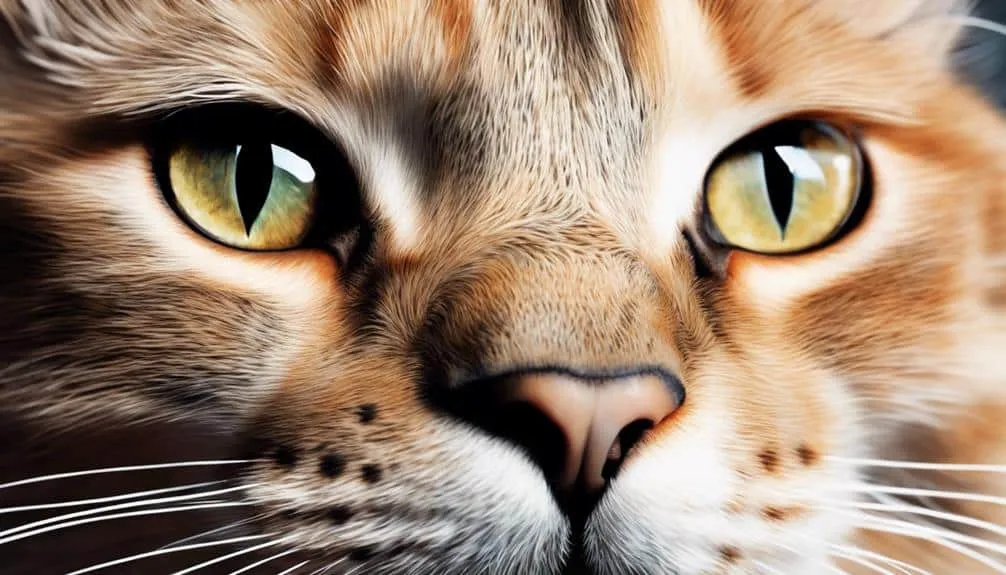
If you want to really understand why your cat purrs, just keep an eye on how they sound and act. Cats can purr more or less, depending on how they’re feeling and what they want. They might purr when they’re happy, relaxed, or looking for some love. Paying attention to when and why your cat purrs can give you a lot of insight into their mood and desires.
Every cat is different – some purr a lot, while others do it less often. By noticing your cat’s purring habits, you can build a stronger connection with them. Watch closely how your cat purrs, and you’ll start to pick up on the signals they’re sending. Understanding these cues will help you know how to respond to your feline friend in the best way possible. Remember, each cat has their own unique way of communicating, so take the time to learn and appreciate your cat’s purring language.
Frequently Asked Questions
Why Do Some Cats Purr More Loudly Than Others?
Ever wondered why some cats purr louder than others? Well, it all comes down to their breathing patterns and overall health. Factors like the cat’s size, breed, and emotional state can also play a role in how loudly they purr.
When a cat purrs loudly, it can be a way for them to communicate with us and express how they are feeling. It can give us insights into their well-being and any needs they may have at that moment. So, the next time you hear a loud purr, take a moment to understand what your furry friend might be trying to tell you.
Can a Cat’s Purring Change Based on Its Age?
A cat’s purring can change depending on how old they are. When they’re kittens, they tend to purr more often to express their needs and feelings. On the other hand, older cats might purr less because of physical limitations they may face. Knowing these differences can help us take better care of our feline friends by giving them the right care and attention they need.
Do All Cats Purr When They’re Happy?
When a cat is happy, it doesn’t always mean they will purr. Each cat has its own way of communicating, and that includes purring. Some cats purr to show they’re content, feel safe, or are showing affection. Purring can also help reduce their stress levels and even aid in healing.
So, if your cat purrs when you’re petting them or spending time together, it’s likely their way of saying they’re comfortable and happy. But remember, not all cats will purr in the same situations. Some may purr more often, while others may not purr much at all. It all depends on the individual cat and their preferences.
Can Stress Cause a Cat to Stop Purring?
Stress can affect how often a cat purrs. If you notice your cat purring less than usual, it could be a sign of stress. To help your cat feel better, try to create a peaceful and relaxing atmosphere for them. Offer them comfort and love to help them feel more at ease.
If you’re concerned about your cat’s stress levels, it’s a good idea to talk to a vet. They can provide advice on how to help your cat manage their stress and improve their well-being. Remember, a happy and content cat is a purring cat!
Are There Specific Breeds Known for Not Purring?
When thinking about cat breeds that don’t purr much, it’s important to know how purring works in cats. While certain breeds might not purr as often, each cat is unique and can have their own purring preferences.
Conclusion
So, in conclusion, when cats purr, it’s like a peek into their emotional world. It helps us to really connect with them on a deeper level.
Some people might think it’s just a nice sound, but if we dig a little deeper, we can see that there’s more to it. It shows us how complex feline communication can be.
So, the next time your cat starts purring, take a moment to appreciate the feelings behind it and the special bond you two share.






